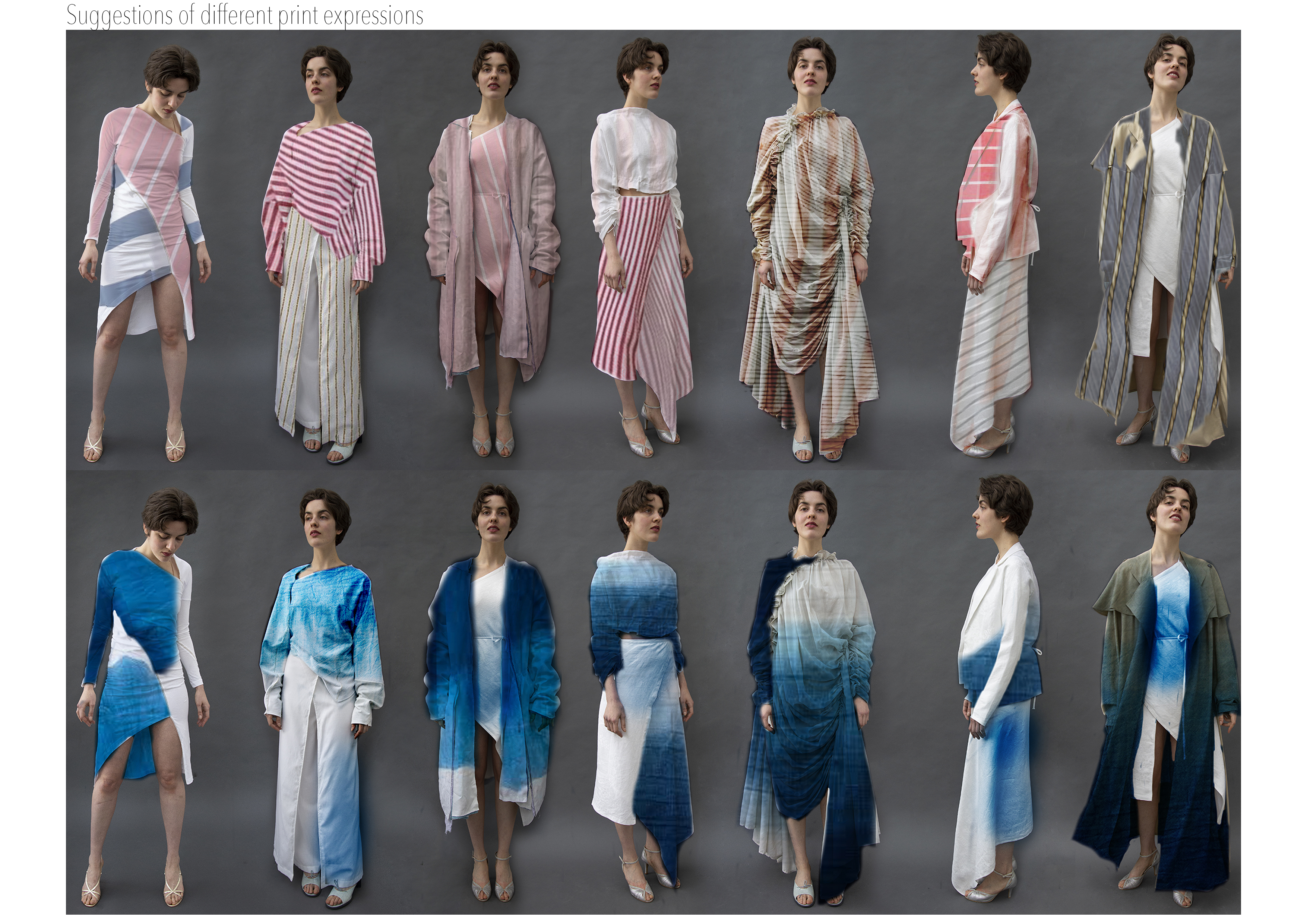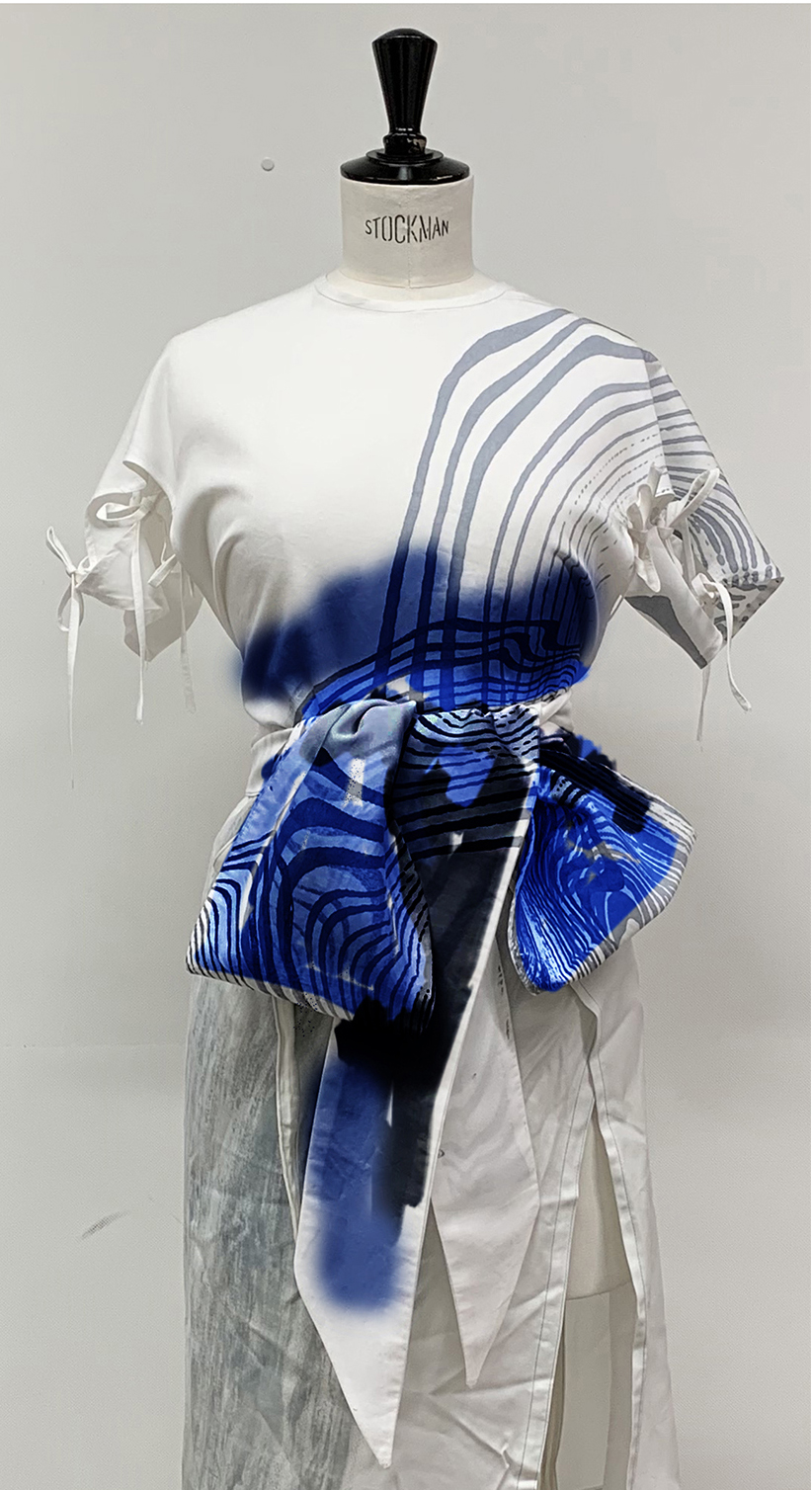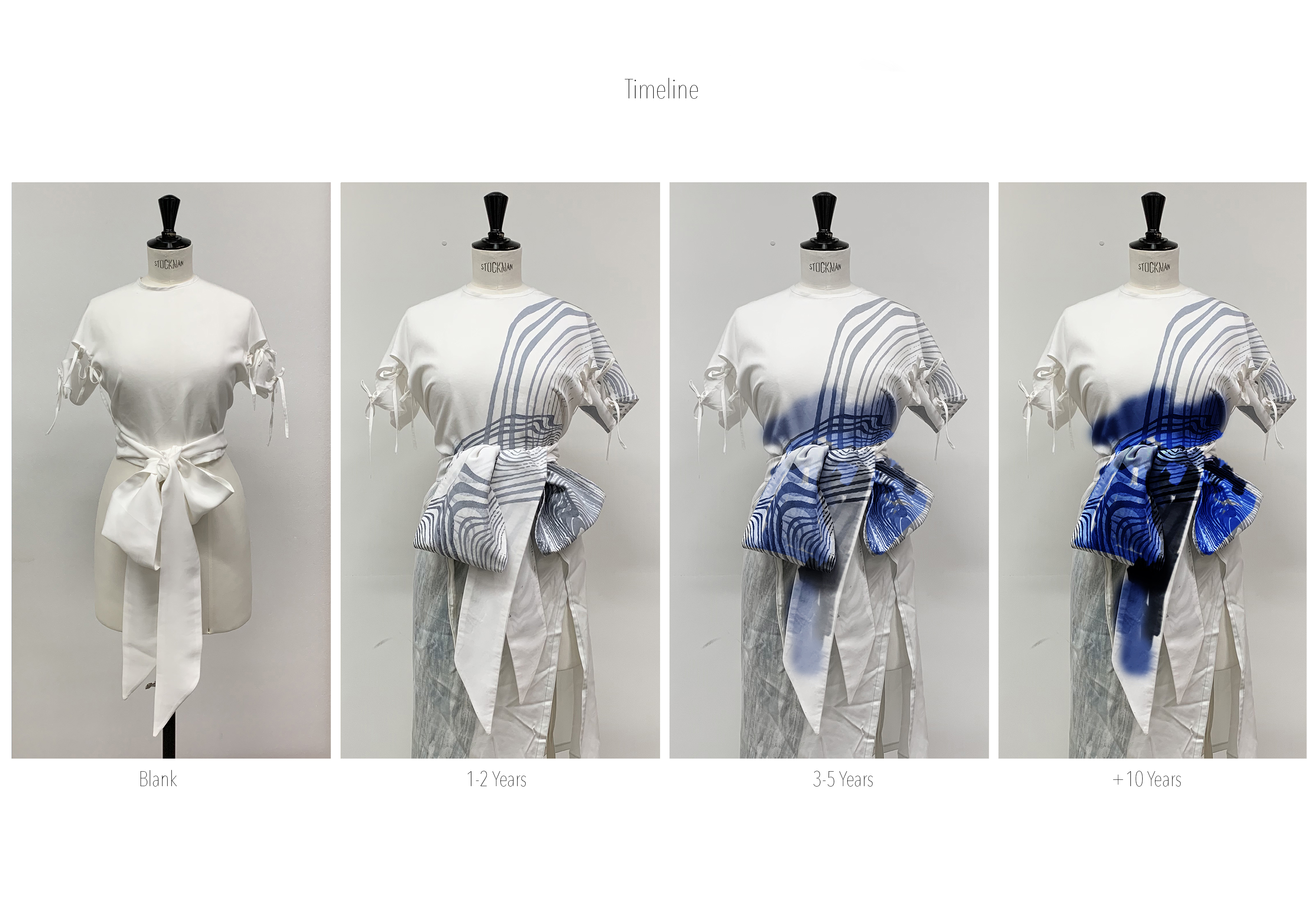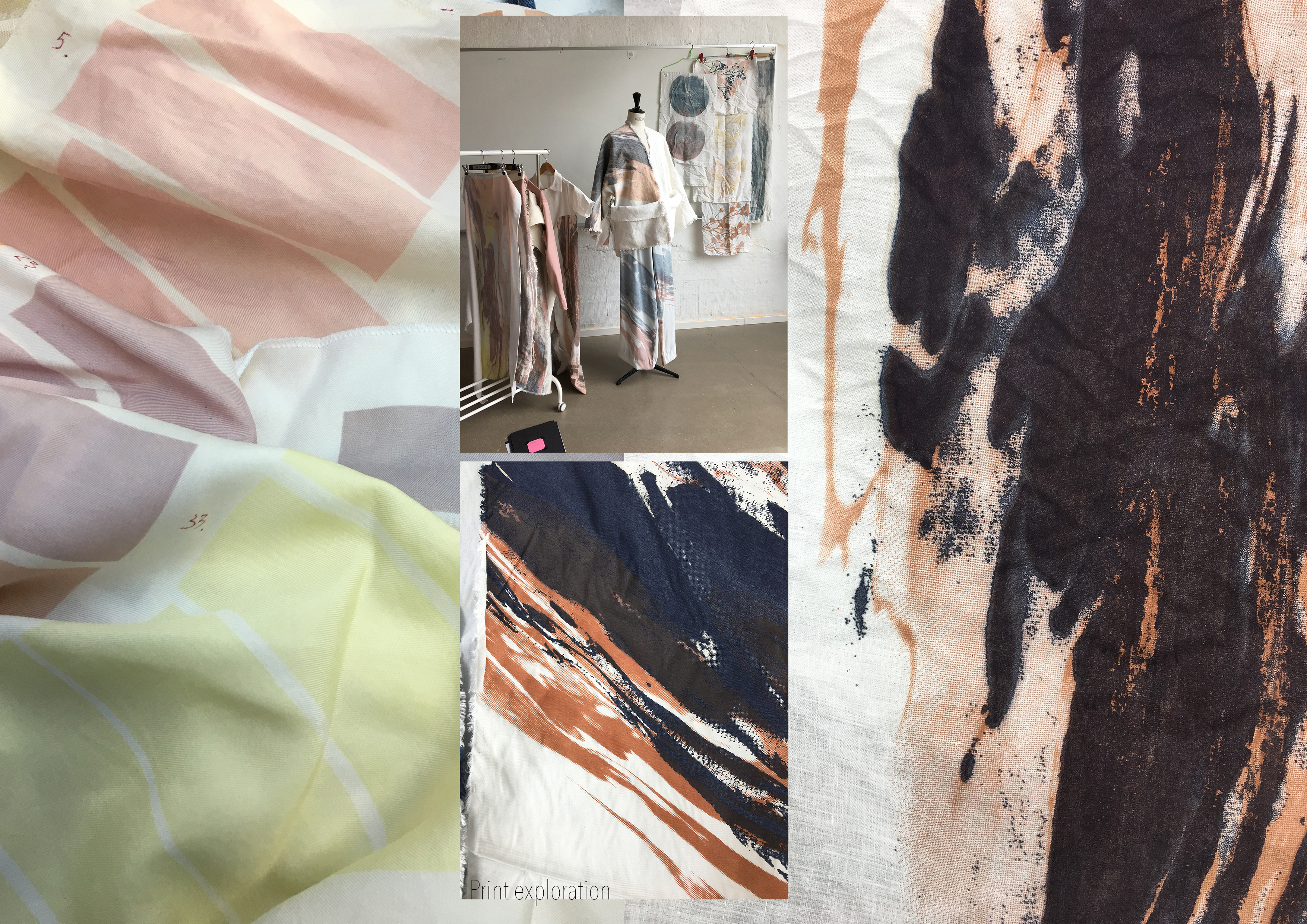
- Made to Fade
- The Swedish School of Textiles student projects

The MA Fashion graduate collection ’Made to fade’ is an exploration into how a garment’s lifetime can be extended through the possibility of updating it post-use through print. This can potentially lead to garments that change over time, depending on the wearer which creates an emotionally durable design, writing the history of time into the garments. All are printed with natural dyes; madder root, marigold, avocado peals and pit, indigo and Brazil wood.
Materials are from second hand.
Lynn Tallvod, The Swedish School of Textiles.
Fashion is currently based on a linear flow and in this collection the flow of the garment is seen more as a loop, this in order to extend the lifetime of garments and ensure that they are kept in use for a longer period of time and thus leading to less of an environmental impact. Showcasing a white collection should be seen as presenting the potential of the work, to start with a blank page. Key words: sustainability, Flat Garment construction, Natural Print, Lifetime of a Garment, Emotionally Durable Design.











All group objects:
Each decision during product development affects sustainability and circularity. To develop products with lower environmental impact, the design team needs to be well aware of each component and process, and their individual and combined effect on the final product and its longevity.
One challenge is having comprehensive knowledge regarding sutainability when it comes to all of the components and processes that are a part of the production and lifetime of the garment. An additional challenge is implementing alternative design methods that do not require virgin components. Ongoing research inspires and shows methods to re-make existing products to have new functionalities and designs with an upgraded look.
With higher traceability when it comes to materials, components, and processes, there are increased possibilities for more conscious decisions. If communicated well, this gives the consumer a better basis for decisions.